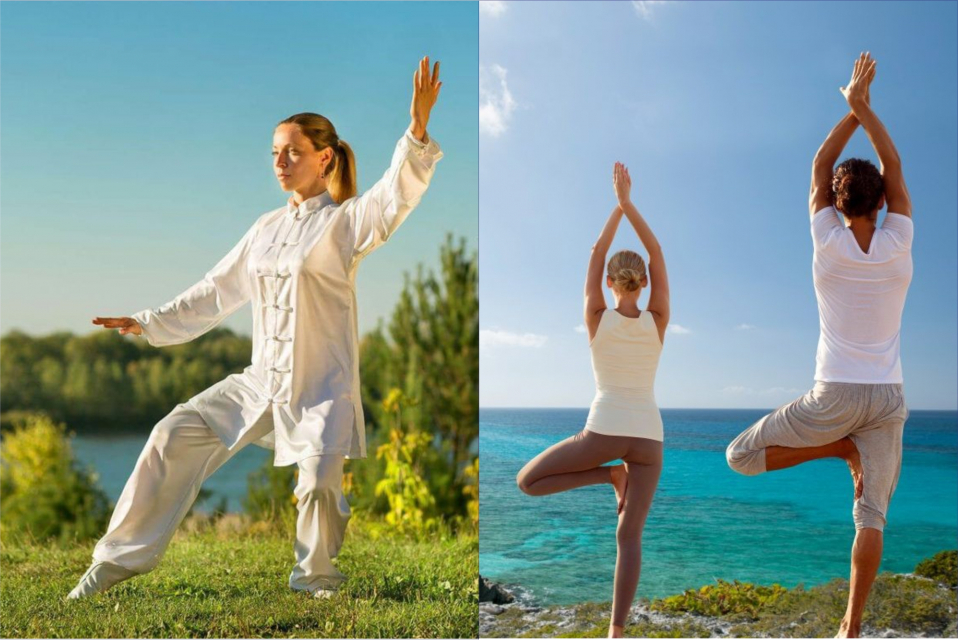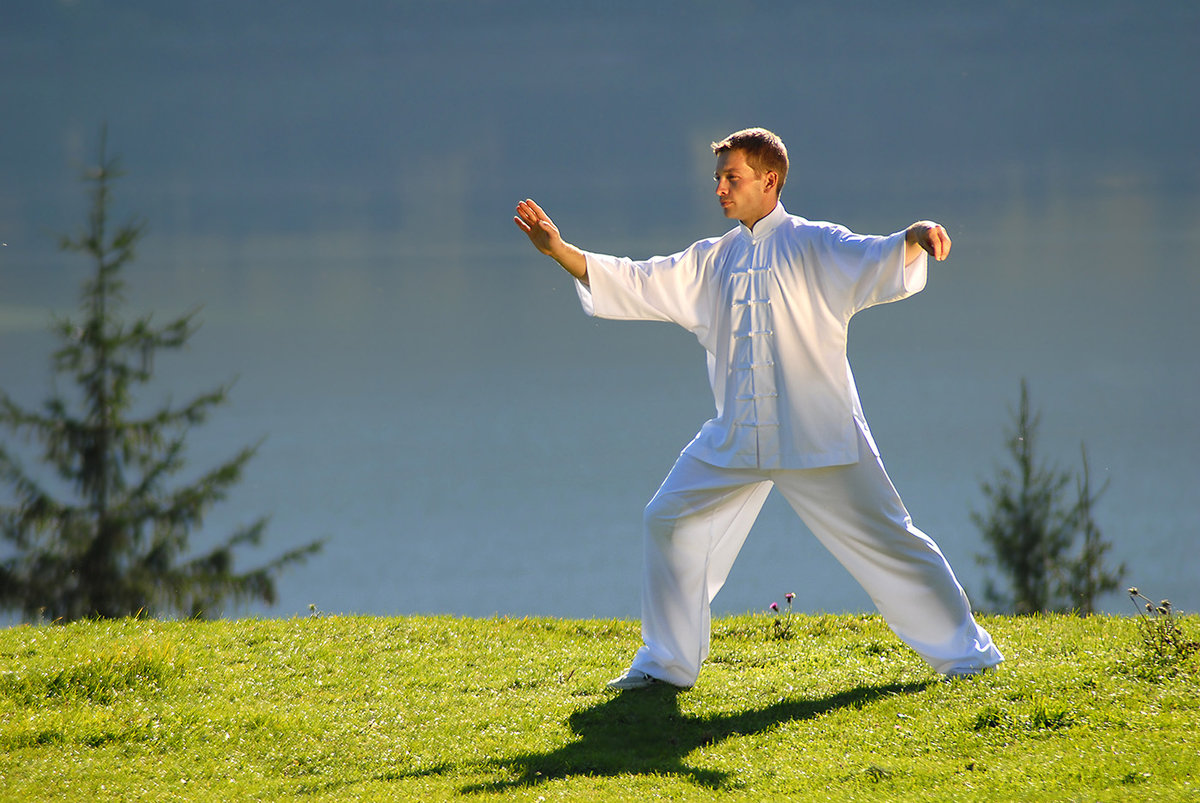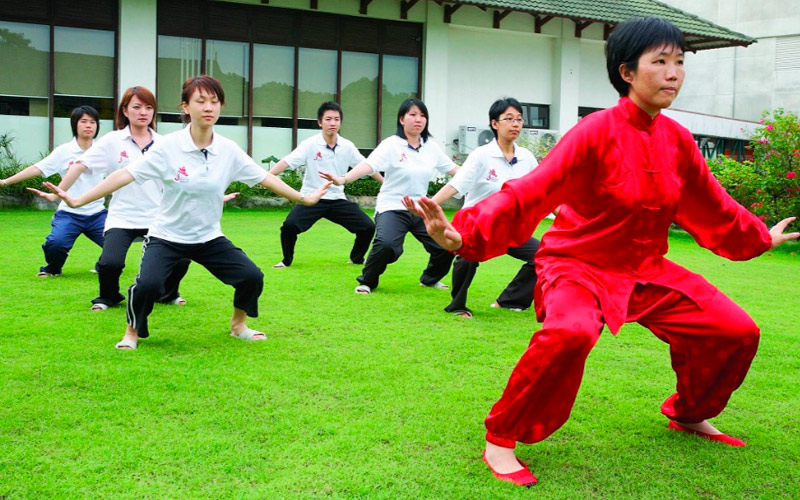Everyone wants to be healthy and not have to make a lot of effort at the same time. That’s why physical activity methods that don’t require any exercise equipment or exhausting classes in the gym are becoming popular. The most favorite way to improve your health and strengthen your muscles is yoga. Unlike yoga, qigong is not as popular, but no less useful way to restore vital energy. Usually, people practice both at the same time or end up choosing just one.

What is qigong?
The spiritual practice of qigong comes from China. It is based on Taoism, the traditional Chinese religious teaching about the Tao, the path of life that is destined for each person. Qigong helps you achieve spiritual enlightenment, balance between the physical and energetic bodies.
Qigong is a compound name consisting of two Chinese words “qi” and “gun”. The first translates as life energy, energy flow, and the second means work or action. The definition itself translates as “work with energy.
In modern practice, the emphasis has shifted from spiritual development to practical health benefits. Adepts of qigong promise that regular performance of basic exercises regulates metabolic processes and strengthens the immune system.
Benefits
Unlike yoga asanas, which require great flexibility, qigong offers a simple set of movements that even an elderly person can perform. To perform the complex, simply wear comfortable clothing that does not restrict movement, and place a warm, thin mat under your feet. It is desirable to perform the practice barefoot, so that the negative energy can escape through the feet.
It is possible to perform exercises at any time. It is better to do it in the morning, immediately after awakening. This will set in motion the energy that was slowed down during sleep and will cheer up the body. There are no strict rules in qigong, and this is what makes it an attractive spiritual and physical practice.
Yoga or Qigong?
If you don’t know whether to choose qigong or yoga, you need to study the main differences between these directions:
- Qigong originated in China, while yoga was invented in India;
- yoga requires mental effort, while qigong is all about developing your muscles;
- The main purpose of yoga is to work with chakras, qigong focuses on stabilizing Qi energy;
- Yoga is more widespread, so there are much more educational materials on it;
Both are ancient practices. Their main objective is harmonious development of a person. But yoga emphasizes spiritual growth, while qigong is used to strengthen willpower.
Yoga and qigong practitioners have no unequivocal opinion on which direction is healthier. They recommend trying both to experience the difference and to choose the right one for you.
Types of qigong
A distinction is made between internal and external qigong. Internal qigong can only be performed by a master. He controls his energy flows and uses them to influence the energies in the student’s body. This type of qigong is used by folk healers. To master it, you need many years of spiritual practice. Not many people choose this path for themselves.
External practice is a control of energy flows through the breath and movements. It is a special kind of meditation, relaxing the muscles and getting rid of the effects of stress. External qigong consists of two paths:
- Static. A person performs breathing exercises while remaining in a static posture.
- Dynamic. Requires the performance of a certain number of physical exercises that affect the muscles and massage the internal organs.
Official medicine has no unequivocal opinion on the practice of qigong. Numerous studies have shown no direct correlation between exercise and changes in mental and physical health. Many people have noted that regular exercise can prevent and speed up the treatment of a spectrum of diseases.
Who it suits

Qigong is not like aerobics or fitness, you don’t need to tense your muscles and actively move to do the exercises. During the dynamic part, the movements are performed smoothly. This stretches ligaments and muscles, warms up the body and speeds up blood movement. You can start exercising at any age and at any level of fitness.
The practice of qigong is suitable for:
- Relieving psychological tension. During the class, extraneous thoughts do not distract attention, it helps to remove psychological blocks, and gets rid of stress.
- Recovery from trauma. The recovery process requires a gentle and gradual return to normal physical activity. Qigong movements are so smooth that the risk of complications or a new injury is virtually eliminated.
- Improved concentration. Focused performance of the exercises develops attention and teaches the mind to concentrate on a particular action.
It is important to make sure that there are no contraindications before you start exercising. Undergo a complete examination to rule out the presence of malignant tumors, inflammatory processes and increased intracranial pressure.
How to start classes
You can practice qigong on your own or with a teacher. When practicing with an instructor, you should carefully choose a specialist with whom you feel comfortable. If you go to an unpleasant person for training, you can get harm instead of benefit. The instructor should be:
- Experienced. A person who does not have a sufficient level of knowledge and technique is unlikely to be able to teach it to others.
- Attentive. During the first lessons, it is necessary to pay attention to how the coach behaves with students. He should pay attention to everyone, to answer questions and respond to complaints.
- Friendly. Before putting a person on the list of the group, the instructor should tell him in detail about how the class will be held. If he does not explain unclear points and answers questions evasively, you should not trust such a teacher.
- Healthy. Appearance of the instructor is of key importance. Those who have been practicing wellness techniques for years cannot be overweight or have other obvious signs of illness.
To learn more about an instructor, you can talk to students who have been attending classes for a long time and get an objective opinion.
Self-taught qigong does not cause any special difficulties for beginners. Basic exercises are easy to remember, and their performance does not require any effort.
For beginners
Before starting classes, it is necessary to perform a light warm-up. On the first day it is enough to perform 2-3 exercises, and on each following class add one, until you have worked out 8. One movement should go smoothly into another and form a continuous loop. All exercises end and begin with the initial position – legs half-bent, arms down along the body, back straight.
The complex for beginners includes:
- Normalization of breathing. As you inhale, raise your arms up, and as you exhale, lower them. Repeat until the rhythm of breathing becomes measured.
- Development of the respiratory system, particularly the lungs. As you inhale, straighten your legs and raise your arms up. As you exhale, part to the sides and slightly bend at the elbows.
- Stretch the muscles of the back. Stand with right leg bent and left leg straightened and slightly set aside. Raise left arm and lean the body to the left. Straighten up, repeat the same action, but in the other direction.
- Working out the shoulder girdle muscles. Raise arms crossed over head, move them apart, fix at chest level and put them down.
- Working out the chest muscles. Left hand up to the ear, right hand down. Turn to the right, pushing up with right arm. Lean back. Switch hands.
- Boat. Squat deeper, hands down and lean forward slightly. Take arms back and lift to maximum height. Straighten legs. Gently twist arms as if they were rotating oars, and then return to the original position.
- Ball. Straighten up, lean to the left. Press your left arm to your shoulder and make a movement imitating the throw of the ball. The movements should be slow and smooth, any sudden jerks are prohibited.
- Moon. Put your hands down and turn to the left. Left side up, right side close to thigh. Lower, repeat to the other side.
The movements should only bring pleasant sensations. If you feel pain in your muscles or joints, stop and give a gentle stroking massage. In the next session, move even slower and watch your body’s reaction.

Benefits and harms of qigong
The main purpose of qigong is to revitalize the body. When you perform a cycle of exercises under the influence of the rhythm of breathing, the internal organs receive a gentle vibrating massage. This speeds up the movement of arterial blood and oxygenates the cells. Regular qigong practice slows the aging process and activates the skin regeneration process. For the elderly, the energy practice is a type of brain stimulation. Qigong improves brain function, in particular, has a beneficial effect on memory.
For people with diseases of the cardiovascular system, qigong helps to stabilize blood pressure, slow down heartbeat, speed up blood flow and thus get rid of cholesterol plaques in the vessels.
During the practice of gymnastics qigong man enters a meditative state. Measured rhythm of breathing and smooth movements contribute to the concentration on the internal processes. Self-reflection – an effective way to get rid of increased irritability, anxiety and fatigue.
Negative results from the practice of qigong can be obtained in two cases:
- the person does the exercise incorrectly and moves too sharply;
- has an illness that is a contraindication for this practice.
If you observe the safety requirements, Qigong exercises will bring tangible benefits after just one month.
